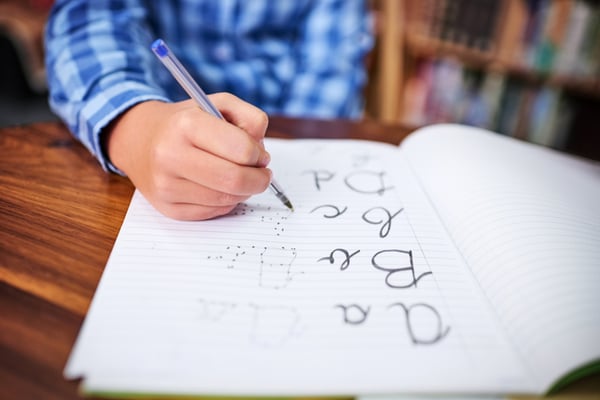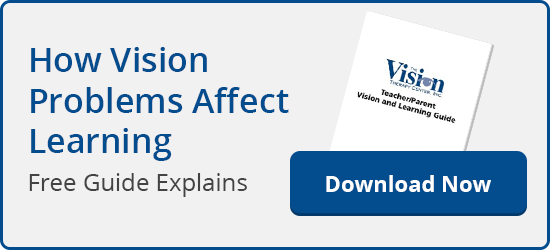
We’ve been blogging recently about how vision issues can impact a child’s spelling and reading abilities. Students who have difficulties writing could also be suffering from vision problems as well.First, let’s clarify what we mean by “writing.” There are two components of writing – one is the physical component of writing, which includes handwriting. The second component is in regard to the composing of paragraphs and papers. In this post, we’ll focus on physical part of writing.
When you’re writing, your vision is the leader. Your vision leads your hand, and your eyes should be looking ahead of where you are on the paper. You should be looking at where you’re going, not at the tip of the pencil. Peripheral vision is used for spacing and aiming. To write neatly on a page, you use the sides of the page to plan how much will fit on one line. You use the top and the bottom of the page as a guide to keep things straight.
For most kids, pointing these tips out can make them aware of how to best use their vision when writing. They can practice and improve their writing. But it’s not so easy for kids with vision problems.
Sloppy Writing vs. Vision Problems
A vision problem that interferes with handwriting can be somewhat tricky to spot. For example, just because a child’s letters and words are crooked doesn’t mean there’s a vision problem for example. There are, however, a few symptoms that are fairly common among kids with vision problems:
Big and sloppy or extremely small. Our clinical experience shows that many kids with vision problems tend to have big, sloppy handwriting. They write using their vision as minimally as possible either to keep it out of the way or to not get fatigued as quickly. On the flip side, we’ve also seen kids write using very small letters, primarily because they’re trying hard to control their writing. They do this by restricting hand and finger movement by making letters very small.
Stressed and tired. If it’s a visual problem, the act of writing neatly will be stressful for the student. They may be okay for a short period of time, but they will start to tire quickly. This may be as short as less than a minute or more typically 5-15 minutes.
In our next post, we’ll touch on tips you can use to teach good visual mechanics, to help students improve their physical handwriting.
